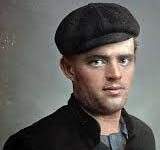The Art of Characterisation in Tom Jones
The Art of Characterisation in Tom Jones
The Art of Characterisation in Tom Jones
Literary the term ‘characters’ refers to these persons who get depicted in a play, novel, story or any literary creation and the term ‘characterization’ refers to the act of depicting characters (persons) in any literary writing. The characters are seen to be depicted through objective narration, dialogues and actions. The characters may be characterized as stable or changing. Again the characterization may be of two types as- type (representative) and individual (peculiar). On the basis of the scope, attitude, disposition and roles, characterization may be treated realistically, ideologically, humorously (comically), tragic- comically and so on. The characters, according to their roles, may be classified as major characters and minor characters. One, among the major characters, who takes the leading role and rounding whom all other characters revolve, is called Hero or Heroine (Protagonist). And the characters who from the very beginning to the very end, stand in the way as an encumbrance of the hero is called Anti-hero (Antagonist).
Henry Fielding is a great master of characterization. His novel Tom Jones is an exemplary one. His characterization is realistic (life-like), type as well as individual, stable and humorous. He characterizes his characters through the means of objective narration, dialogues and actions. We can illustrate his art of characterization in Tom Jones as below:
First Fielding is a true realist in his characterization. His characters are drawn from real life. They are neither angelic nor diabolic but true human beings with a combination of strength and weakness. His characters are nowhere ideological nor psychological but they are the real embodiment brought up in society. Fielding has taken up his characters from his surroundings and fuses them in the anvil o his heart and brain and adapts them to the purpose of his novel. His hero, Tom Jones, is chivalric and generous and at the same time, he is vulnerable to sexual relations. He is portrayed as a conventional tragic hero with a flow, but firm in the struggle of gaining his goal. Jenny Jones is artful and coquettish but equally generous and full of forbearance. Squire Allworthy is benevolent but gullible. His Western is despotic and indulgent. Lady Bellaston is debauched. His pious-looking Blifil is a rogue. Really all these characters are life-like drawn from the practical field and the novelist has succeeded in depicting them without any predilection.
Secondly, Fielding’s art of characterization is both type and individual. Almost all the characters of Fielding represent their classes and ethos of the age. His Tom Jones is the representative of the orphans who undergoes a lot of suffering and struggles at the hand of society. His ladies as- Jenny Jones, Sophia and Miss Brigate-all are the representatives of the victims of the male-dominated society. Though all his characters are types, yet they have been endowed with individuality. His Lady Bellaston has foul breath; squire Western does have the mannerism of speech. Thwackum and Squire are hypocrites but hold divergent views.
Thirdly, Fielding’s characterization inclines more to humour than to seriousness. There is no doubt that some characters have undergone severe suffering and punishment in life as Miss Jenny Jones, Sophia, Mr. Patridge and Miss Brigade. But there are some scenes that are full of comic and humorous appeal. For example- the behaviour of Mrs. Partridge with Mr Patridge when she suspects that her husband is the father of the foundling (Tom), she attacks the poor Patridge with her tongue, teeth and hand and then, being tired, falls into a fit of weeping and succeeds in winning the sympathy of the neighbours, is highly comic. Thus the graphic description of Captain Blifil’s ecstatic pleasure at contemplating the early death of Squire Allworthy is comic. It is amusing to note that it is Captain Blifil himself, who dies, not the Squire. The epitaph engraved on the tomb of Captain Blifil by his unhappy wife is really comic and ironic.
Fourthly, the author has employed all three means of depicting his characters. He often becomes objective in narration and judgment and comments on his characters and their actions. Then he leaves his characters to express themselves through dialogues and exchange of speeches with other characters. Then again, he sets on his characters in action. Thus the novelist is minute and discriminatingly detailed in portraying his characters.
Fifthly, all the characters of Fielding are characterized as stable (firm) characters. They remain static in outlook, attitude, action and disposition from the beginning to the end of the novel. Only Tom Jones the hero grows gradually and attains intellectual and moral maturity. Thus all the characters keep up their constancy throughout the novel.
To sum up it may be said that Fielding is a great master of characterization who has left no stone unturned to make his characters life-like from head to foot. 0 0 0
The Art of Characterisation in Tom Jones
Read More: Use of Wit and Irony in Pride and Prejudice
The Art of Characterisation in Tom Jones
N. B. This article entitled ‘The Art of Characterisation in Tom Jones’ originally belongs to the book ‘World Novel Criticism‘ by Menonim Menonimus. The Art of Characterisation in Tom Jones
Related Searches:
- Fielding’s Art of Characterisation in Tom Jones
- Characterization of Tom Jones
- Tom Jones Character Analysis
- Love Theme in ‘Pride and Prejudice’
Books of Literary Criticism by M. Menonimus:
- World Short Story Criticism
- World Poetry Criticism
- World Drama Criticism
- World Novel Criticism
- World Essay Criticism
- Indian English Poetry Criticism
- Indian English Poets and Poetry Chief Features
- Emily Dickinson’s Poetry-A Thematic Study
- Walt Whitman’s Poetry-A Thematic Study
- Critical Essays on English Poetry
- Tawfiq al-Hakim’s Novel: Return of the Spirit-An Analytical Study
- Tawfiq al-Hakim’s Novel: ‘Yawmiyyat Naib Fil Arayaf’-An Analytical Study
- Analytical Studies of Some Arabic Short Stories
- A Brief History of Arabic Literature: Pre-Islamic Period …











